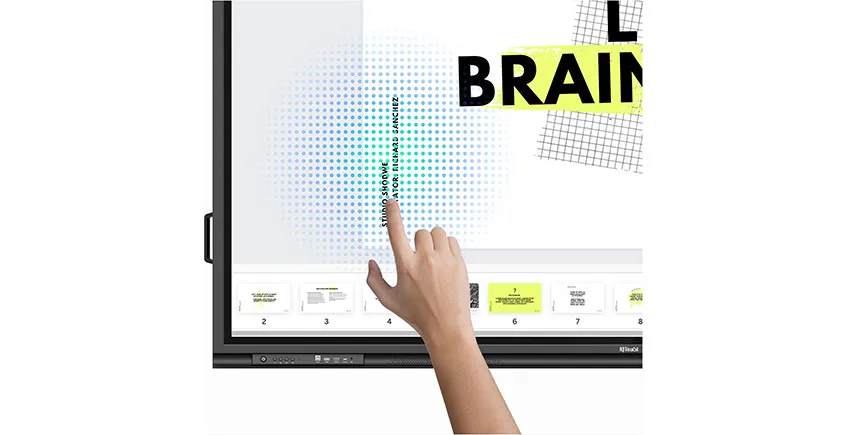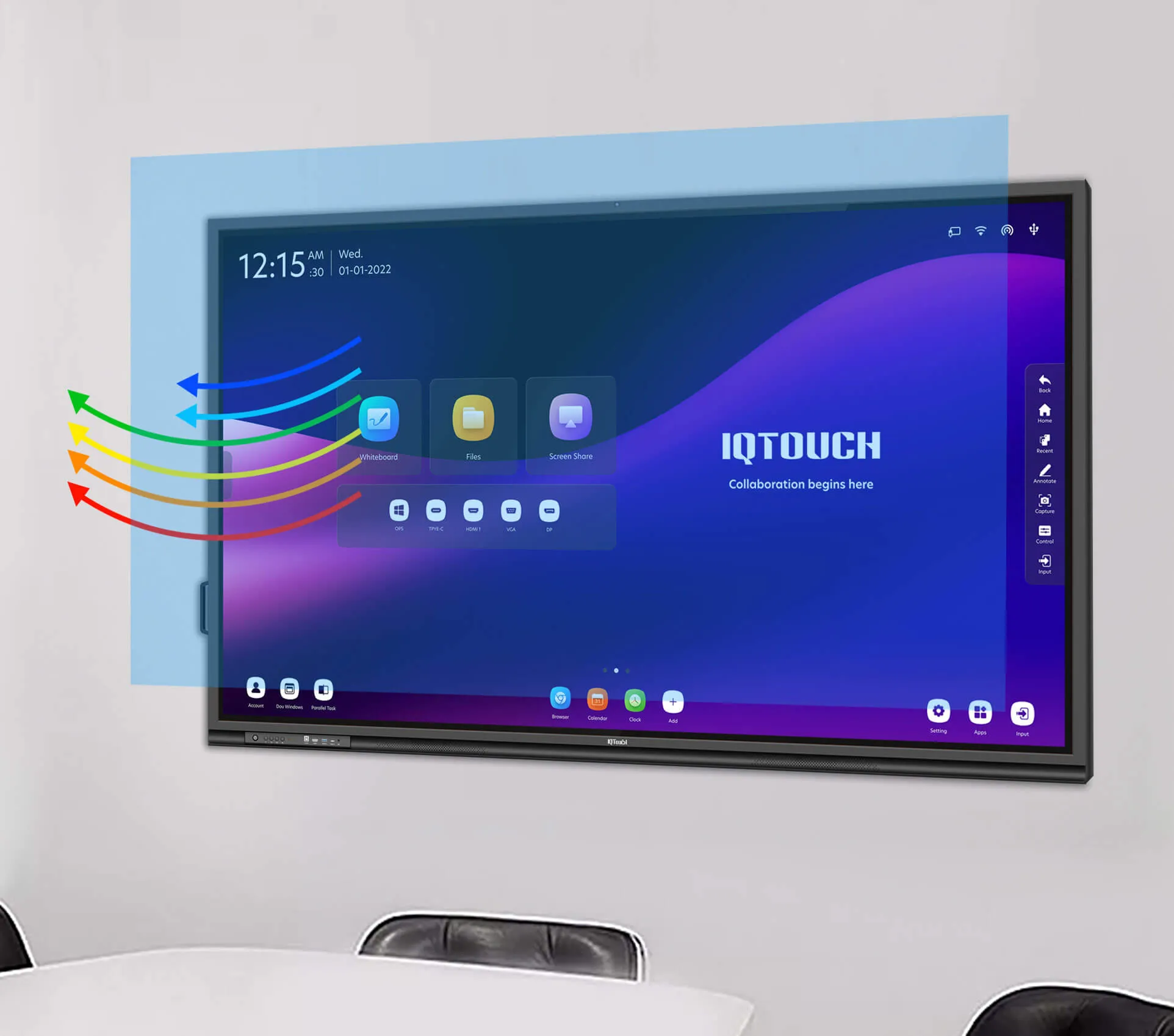Interactive boards have gradually become one of the main roles and educational facilitators in classrooms. Its role is not only to enhance the learning experience of students, but also to provide strong support for teachers to improve their teaching level. The evolution from the traditional Iqboard interactive whiteboard from the first version to the updated one also represents a major leap forward in the technological integration of educational technology devices. In this article, we will provide a comprehensive overview of both types of interactive boards, exploring the constantly updated interactive board functionalities, compatibility, and how they meet modern educational needs.
IQBoard interactive whiteboards have long been celebrated for their adaptability and ease of use.
These boards effortlessly connect with a variety of computers, including Weiss machines, Chromeboxes, and any standard Windows laptop, making them a versatile tool in any educational setting. Featuring larger screen size and more precise internal electronic components, they mirror the traditional whiteboard's shape, but with digital capabilities.
However, these traditional boards come with their set of limitations. They can only handle one interaction at a time and depend on ceiling-mounted projectors and bulbs for display, which can sometimes diminish clarity and brightness. Moreover, they always require a computer to be attached for their interactive features to work, which can be less convenient in dynamic classroom settings.
Although traditional interactive boards can be effortlessly connected to a variety of computers. However, the traditional board has many application level limitations. To overcome these limitations, we need to shift our thinking and think of more advanced interactive display solutions to provide new features of seamless connectivity, multi-user interaction, and independent operation.
Enter the new Iqboard flat panel interactive boards—top industry experts in educational technology. These boards share the same versatility in connecting with devices like the Chromebox, Weiss machine, or a Dell laptop. However, they take flexibility a step further by allowing multiple inputs simultaneously. This means educators can switch between a Chromebook and a Windows machine with just a touch, making lessons more fluid and engaging.

In addition, these latest panels boast a sleek 16x9 length to height ratio, closely resembling a modern television screen, and offer stunning 4K resolution for unparalleled clarity. Perhaps one of the most significant upgrades is the ability to write on the panels using either a special pen or simply a finger. These boards also introduce two-way screen sharing, not previously available, enabling real-time collaboration and interaction.
The IQTouch flat panels offer precise handwriting and erasing capabilities, distinguishing between finger input and palm input. This feature enhances the user experience, ensuring smooth and intuitive interactive sessions. The improved tracking and clarity of handwriting contribute to accessible and effective learning. Additionally, these panels provide versatility in their setup, allowing for wall mounting or placement on a mobile stand, accommodating various classroom layouts and teaching styles.
One of the standout features of the flat panel boards is their ability to distinguish between a finger (for drawing or writing) and a palm (acting as an eraser).
Educational interactive panels that lack precise handwriting and erasure capabilities may cause difficulties in writing, learning, recording errors, and creative limitations for teachers, students, conference and training participants, as well as designers. For example, teachers and instructors often need to write and mark content during the teaching process. Without precise handwriting function, they may not be able to write clear text or details, which affects the effectiveness of teaching. Students may also encounter difficult to recognize text or incorrect handwriting, leading to difficulties in understanding and learning.
This precision significantly enhances the user experience, ensuring that interactive sessions are smooth and intuitive. The improved tracking and clarity of handwriting on these new panels are commendable, making learning more accessible and effective. Besides, the IQTouch HA1100 PRO with infrared ultra fine touch and gesture recognition, as well as the IQTOUCH TB1300 PRO with 40 touchpoints, will be the best choices for your education and learning.

Furthermore, these panels offer increased versatility in their setup. They can be either wall-mounted or placed on a mobile stand, catering to the needs of different classroom layouts and teaching styles.
For users who want a stable and consistent meeting space and want to permanently install the interactive panel in their classroom or conference room, the wall-mounted option allows users to attach the flat electronic whiteboard to the wall, saving space and making the classroom cleaner.
And for users who pursue flexibility, the option of mobile tablet holder can satisfy them to move it to different locations and teaching environments at any time, which is very convenient for users who need to frequently change the classroom layout or perform demonstrations and training in different places. Whether wall-mounted or mobile flat stand, these versatile setup options enable users to install and use flat electronic whiteboards according to their needs and preferences. This flexibility can lead to better user experience and higher efficiency in both educational and business environments.
The shift from traditional IQBoard interactive whiteboards to the more advanced flat panel interactive boards IQTOUCH TB1300 PRO is a leap towards more interactive, engaging, and visually captivating learning environments.
Overall, while the classic boards have served us well with excellent services, the enhanced clarity, versatility, and interactivity of the new panels offer an exciting opportunity for educators and students to connect and learn in ways never before possible. Whether it's through multi-device connectivity, high-definition displays, or intuitive input options, the future of classroom interaction looks bright with these innovative tools at our fingertips.
For a comprehensive examination of optimal interactive flat panels for your classroom, we recommend visiting our product page or contacting us via our contact form.
Here are some other articles that we think might interest you:
How to Use Interactive Flat Panels for Entertainment and Social Interaction
How Interactive Flat Panels Can Enhance Your Learning and Working Experience
How to Use Interactive Flat Panels for Business Meetings
Copyright © 2017.Returnstar Interactive Technology Group Co., Ltd All rights reserved.
